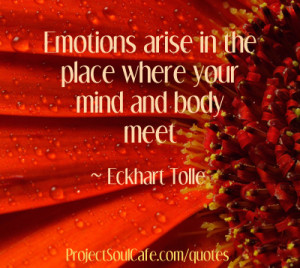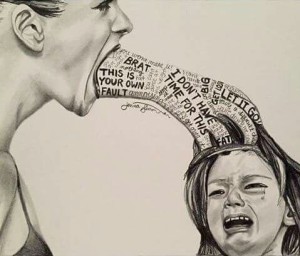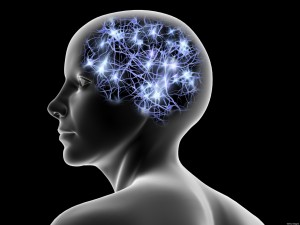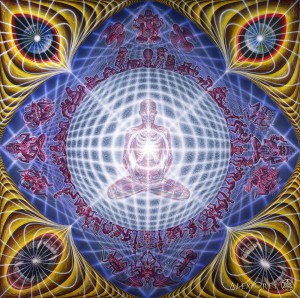Holistic Healing: Exploring the ‘Mind’ Aspect of the Body/Mind/Spirit Connection
Holistic Healing and the Mind
The Mind encompasses a huge part of our experience – far more than we are often aware of. It is the Mind aspect of ourselves that controls our inner landscape and which is reflected in our outer experience. Our perception will be coloured by our thoughts, beliefs, emotions and past experiences and will impact the health of the Body and the spiritual direction we take. Holistic Healing must take into account what happens in the mind.
What is Mind? The Webster’s New World Dictionary gives a pretty good working definition: “The seat of consciousness, in which thinking, feeling, etc take place.” The Oxford Dictionary adds ‘volition’ to the list. Funk and Wagnall’s first definition is ‘The aggregate of processes originating in or associated with the brain, involving conscious and subconscious thought, interpretation of perceptions, insight, imagination, etc.” A psychological on line dictionary defines Mind as “The totality of conscious and unconscious mental processes and activities” and another as “the element of a person that enables them to be aware of the world and their experiences, to think, and to feel; the faculty of consciousness and thought.”
As I sit with these definitions, it becomes clear to me that the mind is a pretty fluid place. Thoughts, feelings, perceptions and memories all pass by – arising and falling away. Awareness and consciousness are key elements here as well. The ‘seat of consciousness’ brings an image of a witness to all these processes. And the witness is associated with the ‘spirit’ aspect of the Body/Mind/Spirit connection. We will deal with these elements one by one.
Thinking and Feeling
Where do our thoughts and feelings come from? They seem to arise by their own volition, like waves on the ocean. Many of our thoughts are habits – some acquired from our family of origin and some from experiences along the way or people we want to emulate. Emotions are also often habitual – modeled on the way our parents behaved in various situations. Emotions and feelings can be coupled with thoughts as well. Someone does not return our call and a habitual thought comes to the surface: I am not respected. This brings up anger and resentment.
The origin of a coupling of this nature often is in childhood – before the age of 8 or 9. This is because the cognitive brain does not come on line until this age. Before this, most events and experiences are processed emotionally. So one possible scenario is that you tried to get attention from your mother when you were feeling frustrated or sad. But your mother yelled at you for annoying her. Underneath the hurt that arose, you felt misunderstood, unloved and disrespected. You became angry as that was what was modeled in your family as a way to deal with frustration. The coupling will continue until you become conscious of the process and heal the underlying feelings and dismantle the limiting self-beliefs. When you examine the belief that you are disrespected and unloved, you discover not only is it not true, but it has been colouring your perceptions forever.
A visual depiction of how parents unconsciously transmit emotions like anger to their children along with negative beliefs about self
Fluidity
Our beliefs about everything not only colour our experience of events, but according to quantum physics, they actually change what we are looking at! “Scientists have shown that while we may think that we’re only observing our world, in fact it’s impossible for us to simply “watch” anything. Whether our attention is focused on a quantum particle during a laboratory experiment or anything else – from the healing of our bodies to the success of our careers and relationships – we have expectations and beliefs about what we’re watching. Sometimes we’re consciously aware of these preconceptions but often we’re not. It’s these inner experiences that become part of what we’re focused on. By “watching” we become part of what we’re watching…..As scientists continue to explore just what it means to be participators, new evidence points to an inescapable conclusion: that we live in an interactive reality where we change the world around us by changing what happens inside of us while we’re watching – that is our thoughts, feelings, and beliefs…..[E]verything we experience as “life” is directly linked to what we believe. To change our lives and relationships, heal our bodies, and bring peace to our families and nations requires a simple yet precise shift in the way we use belief.” Gregg Braden, The Spontaneous Healing of Belief: Shattering the Paradigm of False Limits introduction ix-x.
How is that for fluidity? What Braden is indicating here, is that shifting a belief or a thought is to shift our experience. Harry Palmer, in his book, Techniques for Exploring Consciousness: Resurfacing, says, “Beliefs are the thought forms through which you create, interpret and interact with reality….Beliefs interpret and, within certain self-determined parameters, create the experiences that confirm the truth of what is believed….By managing beliefs you have the power to restructure consciousness and create new realities.” (p. 2-3) In other words, beliefs create reality, if you want to change your reality, you have to change your beliefs.
So, your thoughts are actually powerful enough to create disease, to create healing, to create wealth or any other physical manifestation on the planet.
Where to start?
The Seat of Consciousness
The key to shifting thought and emotional patterns comes from shifting our relationship with them. If thoughts and feelings operate at the subconscious level, they are in the driver’s seat. ‘Sub’ means ‘below’. So if they operate ‘below’ the level of our conscious awareness, they will control. Most people respond to negative thoughts and emotions with fear – mainly because they don’t know how to deal with them. They are afraid that they will be taken over by anger because that is what has happened in the past. They are afraid to experience their pain because they feel swallowed in the waves of grief and fear they will drown. Thoughts of ‘I am a failure. I will never be able to get a job – or relationship – or car – or…..’ roll around and around in the mind, garnering ever more speed and velocity, and gaining more and more control. It seems impossible to get off the mental/emotional roller coaster.
Out of fear, we have stuffed these emotionally charged experiences, difficult situations, traumatic memories and their associated thoughts and emotions down into the basement. We have turned off the light, and slammed and locked the door, hoping that none of them will ever escape or see the light of day. And from there they breathe life into every moment of every day, breeding shame and guilt.
So what is the opposite? Bringing these thoughts and emotions to conscious awareness. This means taking a step back from identifying with the one in the middle of the chaos and drama, and spending more time simply watching the chaos and drama unfold. Identify with the witness – the ever-present awareness in the ‘seat of consciousness’ from the Websters’ definition of Mind. Learn to be the ‘watcher’ as if your life were a movie, playing out before you.
Witness – Conscious Awareness
Here is a good starting point. Record your thoughts while simply watching them – without editing or judging. (Voice Memo in Utilities of your smart phone works well for this.) Just record your thoughts as they come up for about 3 – 5 minutes. Then go back and transcribe the tape. You could then leave it for a day or two before going back to read the transcript. You will be amazed at how repetitive and inane that voice inside your head is. Here is a short transcript from my consciousness from about 5 minutes ago, “Oh that bloody dog is barking again. God he’s yappy. OK. What am I going to do for the rest of the afternoon? I feel like going out into the garden but I don’t know – there’s this big grey cloud. Nah. I hope it doesn’t rain. Maybe I should go for a walk. Oh no – I’ve gotta finish that blog I’ve been writing. Oh I wouldn’t mind something to eat but I don’t really have anything interesting. Oh, my God, look at the dust on that table. OK. So where was I? Yah I wouldn’t mind going out for a walk. It’s a little cold though. I don’t know. What time is it? 2:16. Hmmm. My feet are cold. I’m hungry. Maybe I should get something to eat first. Hmmmm. I wonder. My back hurts. Maybe going for a walk will help my back. Oh, I should finish writing that thing first. I don’t feel like it. I’m hungry. I’d like something to eat. I don’t really have anything interesting. What am I doing tonight? I’m not really doing anything. Oh maybe – maybe I could finish writing this thing tonight. I wouldn’t mind doing something. I wouldn’t mind seeing a movie or something. I wonder if it’s going to rain? I should probably – oh I can’t eat anything – I don’t have anything interesting. Maybe I should finish a little more of this and then I’ll go for a walk. Yeah – I just hope it doesn’t rain. Boy oh boy I should do some dusting. I wanted to get out in the garden but it’s not very sunny. Ach. At least that dog stopped yapping. OK. Maybe I’ll go back and do a little bit more writing…” Congratulations if you got at least part way through that two and a quarter minutes of drivel. If I had a friend sitting beside me right now saying all of this, non-stop, I would probably ask them to leave! And yet, that is the ‘thinking mind’ that we give enough credence to that we listen it and let it make decisions for us. Learn to simply watch the thoughts go by like clouds on a summer afternoon, without judgment or trying to change anything. And one major piece of advice – ‘Don’t believe everything you think!’
This exercise is a beginning point for becoming more aware. In a similar manner, one can be aware of emotions as butterflies passing by. If we can avoid the temptation to act out the emotions, but simply watch them, without judgment, without attraction to the positive ones or aversion to the negative ones, they will cease to have as much of a hold on us. Sitting in anxiety, without trying to push it away or have it be any other way, is a good way to settle it down. Watch the unconscious urges to assuage the anxiety – patterns like compulsive eating, watching TV, drinking, smoking. Just watch them without acting on them and without judging them. Become more mindful.
Then, when you think you have the stomach for it, take a little sojourn into the basement. Pry open the door, and allow the light to play on the contents of the basement. What is hidden down there? By all means, ask a trusted friend to be there supporting you when you crack the door. Or find a good therapist who will help you look – without judgment or trying to change anything. This is the way to separate thoughts from feelings (especially fear) and to heal past traumas. Holistic healing starts with awareness and bringing the light into dark places.
Holistic Healing: Effect of Thoughts and Emotions on the Body and Spirit
Negative thinking and emotions can spiral you down into depression or up into anxiety by triggering the fight or flight response. The amygdala, a remnant of the caveman era and part of the limbic system, cannot tell the difference between a stress thought and the real threat of an attack by a wild animal. It sends out panic messages to the rest of the body and cortisol, adrenalin and other neurotransmitters are released into the blood stream. The resultant metabolic changes can cause large scale damage to the body if these thoughts and feelings continue. The wide scale mood changes can lead to gastrointestinal orders, heart disease, and vulnerability to the immune system, among other things. And the more depressed or anxious your mood becomes, the more depleted serotonin and dopamine become – the neurotransmitters responsible for happiness and positive moods. This is a complex process and more details can be found in my blogs, ‘Stress/Relaxation – The Dance of the Nervous System’, ‘What is Anxiety and how to get off the Roller Coaster’ and ‘Depression – Falling into the Black Hole’.
Negative beliefs – such as “I’m unlovable” will block out the experience of love. There may be people all around you who care about you, but you will not be able to let that love in. Negative thoughts and emotions also block you from feeling connected to something greater – which is key to Holistic Healing. Studies have shown that people who have a wide circle of support and who feel hope and optimism live longer and avoid major disease than those who don’t. A sense of purpose gives meaning to our lives – even when things don’t work out the way we would like. It gives us strength to ride the waves and a sense of joy in the experience. For more detail, go to my Blog, ‘Holistic Healing – Exploring the ‘Spirit’ Aspect of the Mind/Body/Spirit Connection’.
The Seat of Consciousness
Alison Etter MEd, RPC, RTC
Counsellor and Healer, Breakthrough Counselling and Coaching
250-324-3040
Website
Email Alison
See all articles by Alison Etter










Like that last definition “The element of a person that enables …” .